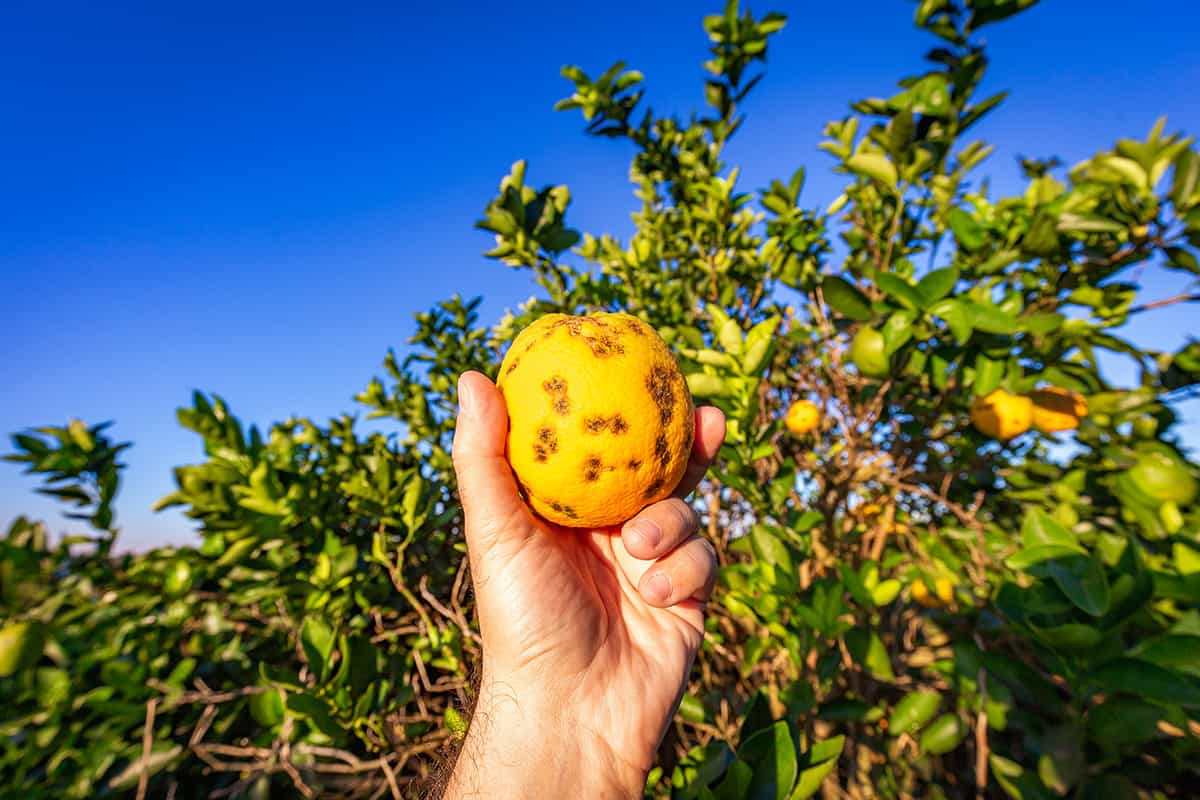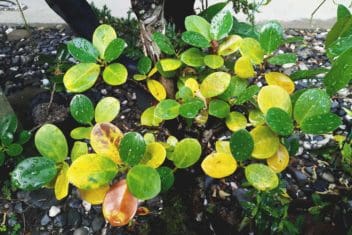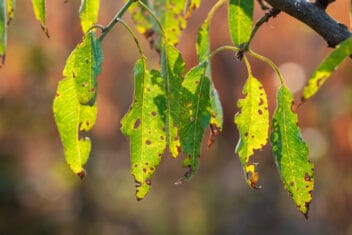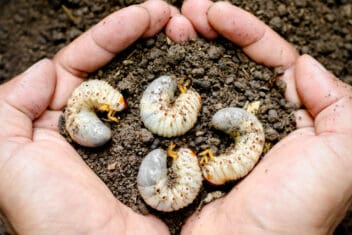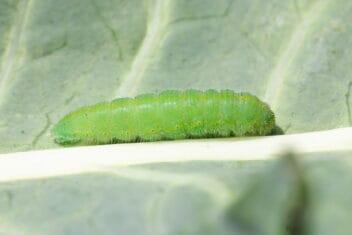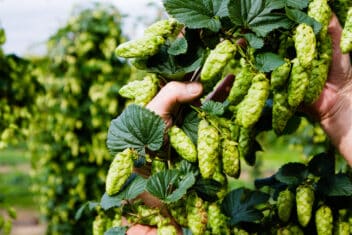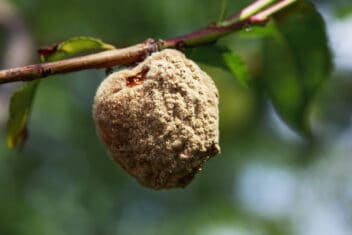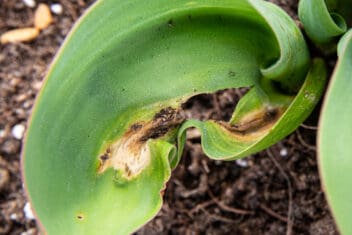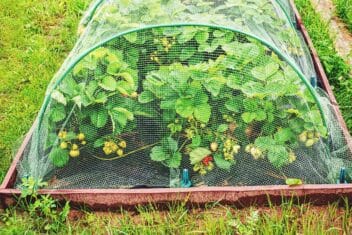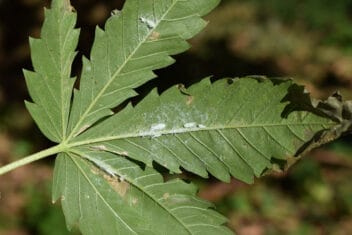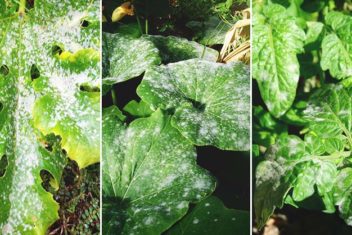People who live in subtropical or tropical regions are lucky because they can grow citrus fruits, but the downside is that these trees come with plenty of pests and diseases. Some of these problems can make growing citrus trees troublesome, if not impossible.
Even worse, these pests and diseases infest a variety of citrus trees, like lemons, oranges, and grapefruits.
Don’t lose hope. With the right preparation and knowledge, you can avoid or get rid of these problems. Since they’re so similar, we decided to group them together into one list to help you prepare for the citrus tree pests and diseases you might face.
6 Common Citrus Tree Pests
There are quite a few pests that attack citrus trees. The following are some of the most common. It’s always best to be prepared to prevent and control these infestations before they get too bad.
1. Aphids
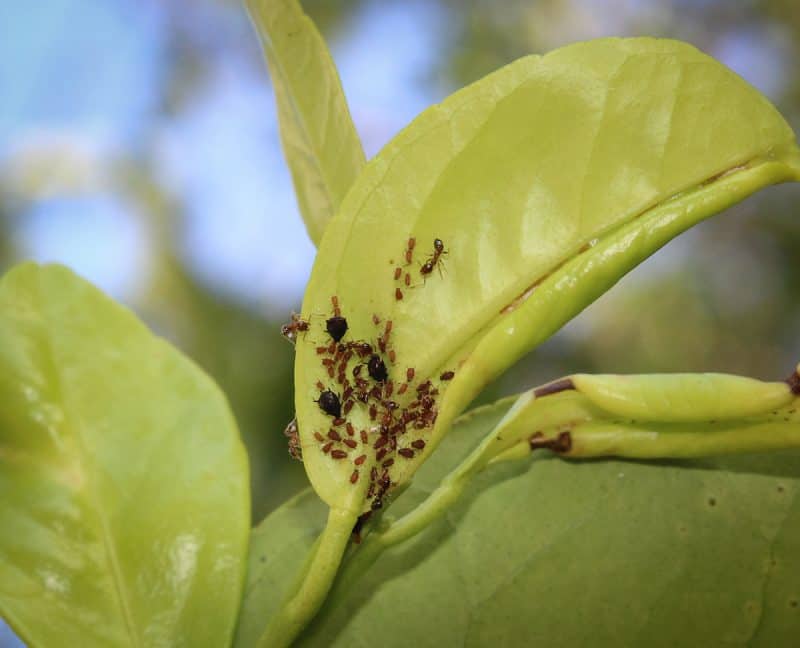
Aphids are one of the most common citrus tree pests, but they typically cause little damage to citrus trees. The only time that the pests themselves cause serious damage is when there is a large population on your tree.
One of the biggest issues caused by aphids is that they suck out the sap from the leaves, and they leave behind a sticky residue called honeydew. This attracts sooty mold, a fungal disease that we discuss below.
Take a look at our guide to aphids and how to get rid of this pest.
2. Brown Soft Scale
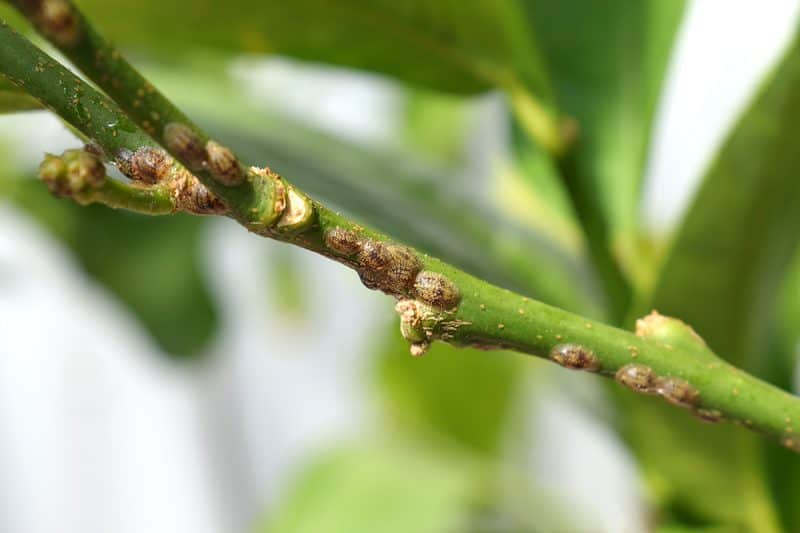
Another one of the most common citrus tree pests is brown soft scale. They are also found on other types of fruit trees, not just citrus. Soft scales are small insects that attach to the wood and foliage of a tree, but sometimes, they also attach to the fruit.
When adult brown soft scales attach to a tree, they look like a crusty or waxy bump on the tree, but it’s really an insect. These pests suck the sap from the plant, causing the leaves to turn yellow and drop off. They often secrete a substance called honeydew that attracts sooty mold and ants.
You can use a horticultural oil to control the scale insects; it suffocates the pests and eggs. Some insecticides also work against brown soft scales, but they can also kill the good insects in your grove.
3. Citrus Bud Mite
Citrus bud mites (Aceria sheldoni) typically attack and infest lemon trees, especially in coastal areas. They’re small insects with four legs and an elongated body. Bud mites tend to peak in the summer and fall when the blooms are at the highest risk.
The problem with these pests is that they’re hard to detect because they’re so small. If the infestation is large, you’ll be able to see them by examining the fruit buttons. You can control infestations using targeted citrus pest sprays.
4. Citrus Thrips
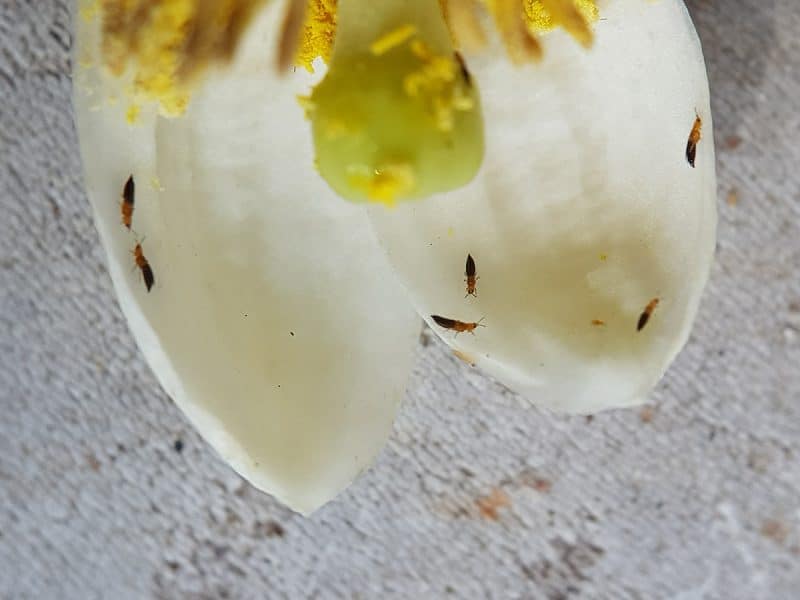
Dealing with citrus thrips is frustrating. One of the first signs you’ll notice is shriveled leaf buds and curled, distorted leaves that have a silvery appearance. Citrus thrips also cause scabbing and streaking on the fruits.
These pests are tiny orange or pale yellow insects that attack a variety of fruit trees. They prefer to attack young plants, laying their eggs in the fall. By the spring, the juveniles feed on the new leaves and cause damage that impacts the tree the entire growing season.
If you find that you have a citrus thrip infestation, look at our guide to dealing with thrips in your garden.
5. Citrus Whitefly
The citrus whitefly (Dialeurodes citri) is a tiny insect that is only 1/2 inch in length, and it’s typically found on the underside of the leaves on your citrus trees. If you shake the branches, you’ll see a bunch of white-winged insects come out. You might also find small eggs on the underside of the leaves.
Like aphids, citrus whiteflies leave behind honeydew on the tree. If you have a bad infestation, you might see the honeydew dripping from the leaves, attracting other pests.
Luckily, controlling whiteflies is possible with insecticides if you use one that is meant for citrus whiteflies. It’s hard to get full control over the adults, but several sprays will reduce the juvenile population, eventually causing the population to decline.
6. Orange Dog Caterpillars
What a weird name for a pest, right? This citrus tree pest gets its name because it’s a large caterpillar with an orange-brown color. Orange dog, or orangedog, caterpillars attach to the tree, eating the leaves; you’ll notice that the leaves are partially eaten or chewed from the outer edges inward.
If you spot these caterpillars on your plant, you need to remove them by hand and kill them. It’s best to drop them in hot soapy water because they release a nasty smell if you squish them.
Spraying the tree with a garden spray that contains spinosad or Bacillus thuringiensis is an effective control measure. You will more than likely need to spray several times, depending on the severity.
5 Common Citrus Tree Diseases
Growing homegrown citrus fruits is great if you have the right climate for it, but make sure you’re ready for these citrus diseases. Chances are you’ll encounter one or two along the way.
1. Citrus Canker
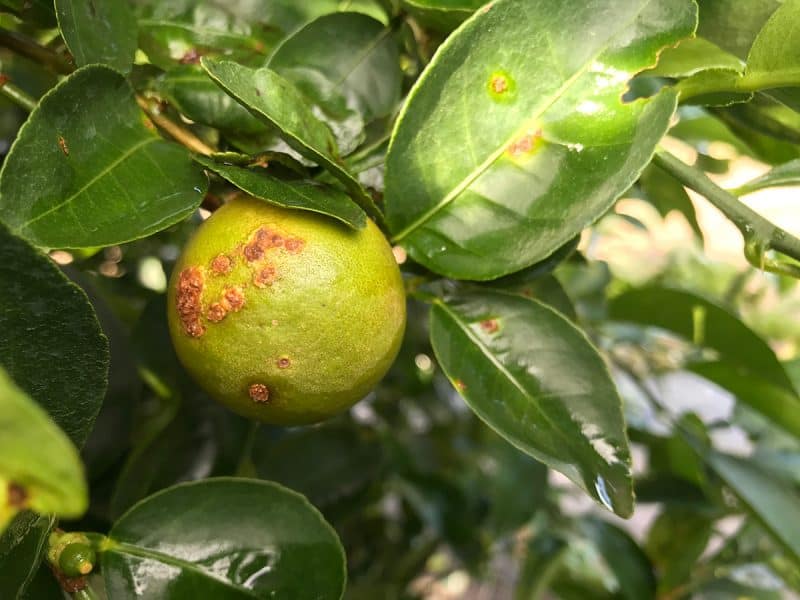
If there is one citrus tree disease that strikes fear in the heart of gardeners, it’s citrus canker, which is a highly contagious bacterial disease caused by the bacteria Xanthomonas axonopodis. Citrus canker leads to yellow halo-like lesions on the fruits, leaves, and twigs on the tree.
If left to spread, citrus canker causes leaf loss, blemished fruits, and even the death of the tree.
One of the problems with citrus canker is that it spreads quickly and easily via wind, insects, birds, and humans. If you use tools without sterilizing, you might infect your tree. It even spreads via your clothing!
Gardeners can use a liquid copper fungicide to protect their citrus trees against citrus canker. If you know it’s in your region, it’s a good idea to treat your trees preventatively. However, once your trees contract this disease, nothing you can do will treat it. Infected trees need to be removed.
2. Greasy Spot
Greasy spot is a fungal disease (Mycosphaerella citri) that primarily infects citrus fruit trees. You’ll know that your trees have greasy spot if you find yellow-brown blister spots on the leaves. The spots are typically on the underside of the leaves and, over time, these spots develop into oily blisters.
This fungal disease causes significant leaf loss, especially in the winter, and infects the rinds of the fruit, especially in grapefruits. Gardeners need to focus on preventative and control methods, like collecting and removing fallen leaves to reduce the spread of the spores.
If your citrus trees have greasy spot, spray your citrus trees with liquid copper fungicide. Most infections require two applications to take care of this fungal infection.
3. Melanose
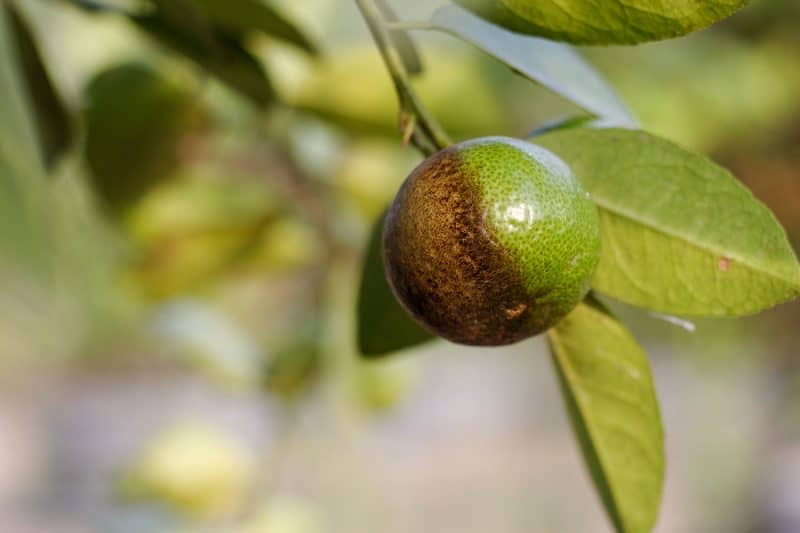
Here is a fungal disease (Diaporthe citri) that infects young citrus fruit trees. It most often infects grapefruit trees, but it’s not exclusive to this fruit. Melanose causes scabbed fruit rind, but it doesn’t affect the fruit quality. It simply looks unsightly.
This fungal infection is usually worse in fruit trees that are 10 years of age or older. That’s because melanose likes to propagate in dead wood, so make sure you regularly prune your citrus trees to keep this fungus way. You also can use a liquid copper fungicide as a treatment method.
You might opt to just leave it since the fungus won’t impact the flavor of your fruits.
4. Root Rot
Root rot is often called brown rot, and it’s a fungal infection caused by soil-borne fungus in the Phytophthora genus. This citrus tree disease causes dark brown patches on the tree’s bark; you typically see ooze coming from these patches. As the disease gets worse, it causes the bark to dry and crack, eventually causing the branch to die.
That’s not all.
Root rot causes the fruits to brown and decay; the foliage might even die back. This fungus likes to live in the soil, thriving in wet environments. Once infected soil splashes on your citrus tree, it is vulnerable.
Always remove infected leaves and fruit when it falls to the ground, and prune branches that might touch the ground to prevent infection. If you know that your tree has root rot, try spraying it with a fungicide; there are several available that work against this fungal disease.
5. Sooty Mold
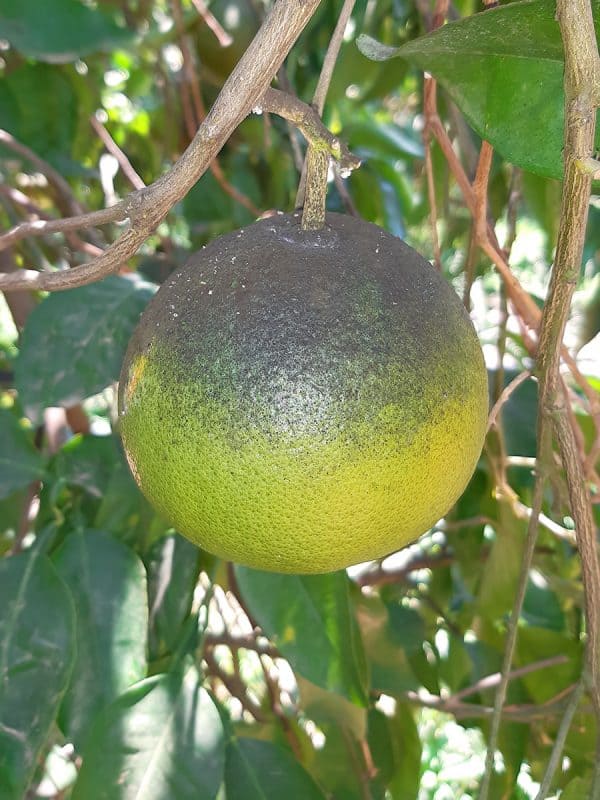
Sooty mold is a fungus that blackens the leaves of your citrus trees; it looks like soot from a fire. It typically appears on plants with an aphid infestation because the mold forms after the insects leave honeydew behind on the leaves. If you have aphids, whiteflies, or mealybugs on your plants, keep an eye out for sooty mold.
You typically can eliminate sooty mold with liquid copper fungicide. One application is often enough, but you might need a second if it’s bad. Take a look at our guide to sooty mold and how to control it on your fruit trees.
